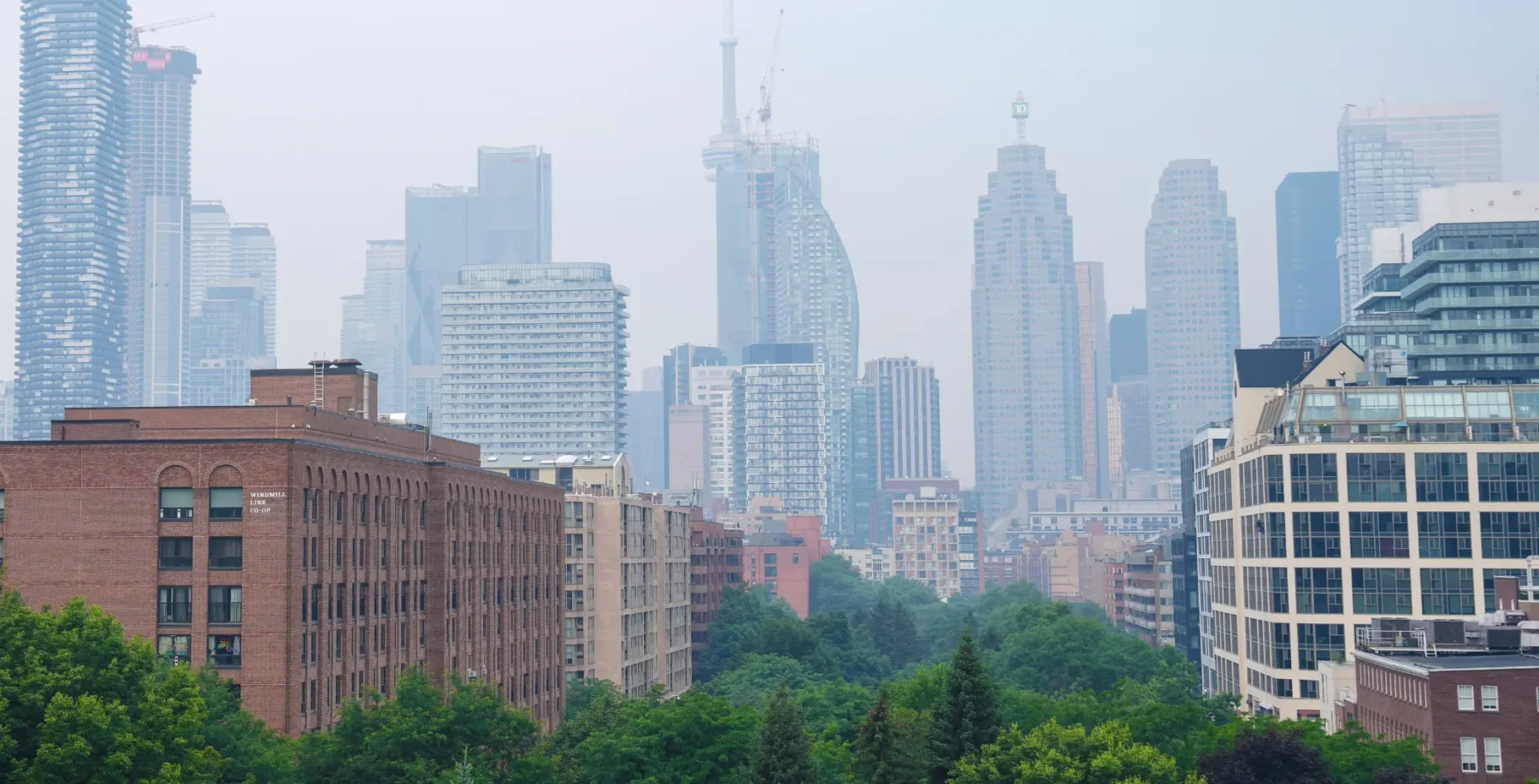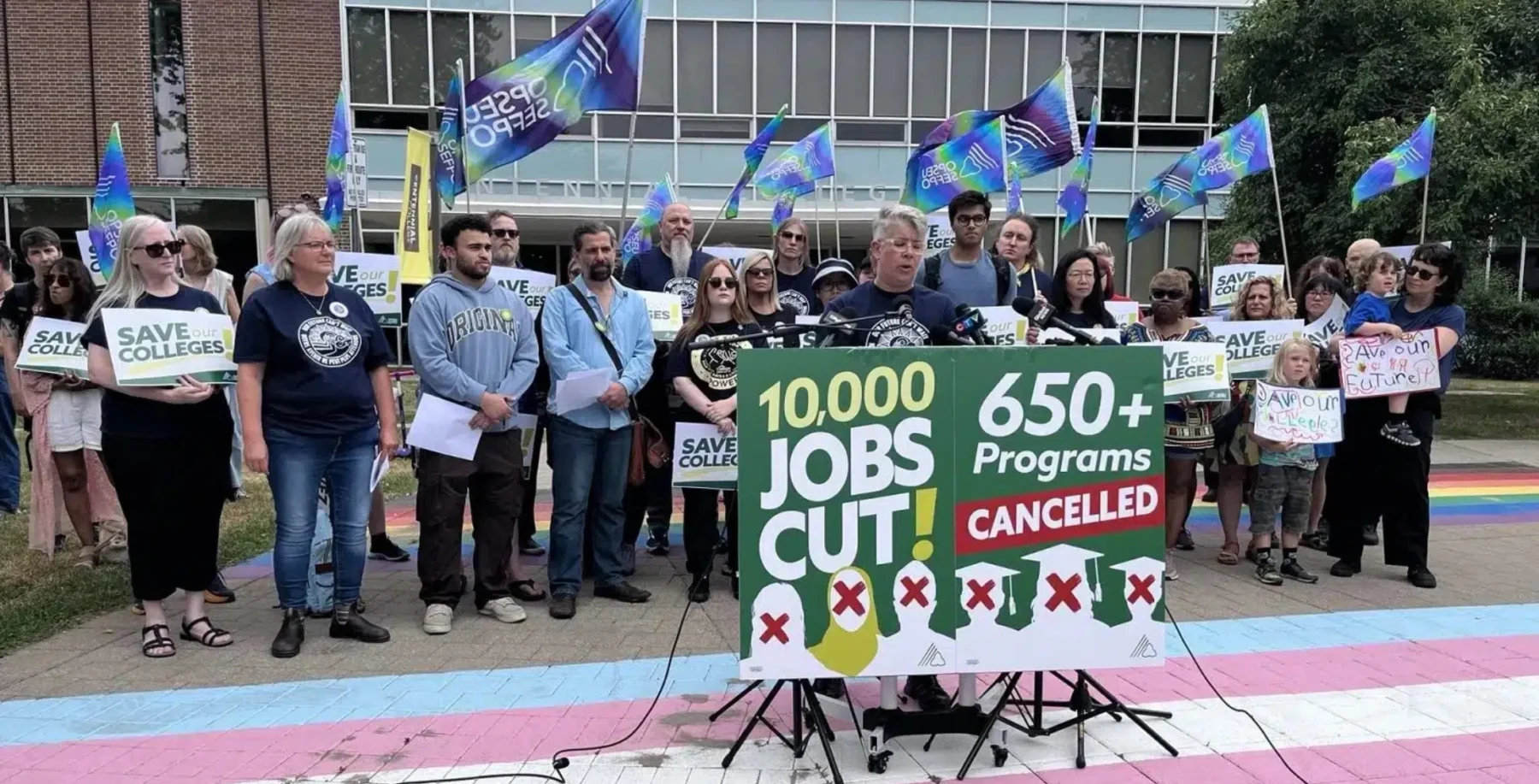
Rating: NNNNN
Finding old Toronto labels is getting to be a challenge. My Harry Rosen summer wool suit was built in 1971 and will last another decade or two if the moths dont move in.
Its hard to tell exactly with womens clothes, but Id say the red velveteen outfit from Gaytown on Adelaide also comes from the 70s. The Irving Posluns I Love Lucy-style coat I found at Buy the Pound is 1950s. When I was a kid, Posluns was still the place to get a new coat, and the excitement of the garment industry lingered downtown.
To get a look at what the mostly Jewish shmatte industry looked like in old Spadina, the heart of the congested neighbourhood known as The Ward, check out A Common Thread, currently at the Market Gallery in the St. Lawrence Market.
Back in the 30s and 40s, the needle trades convinced the Canadian government to allow large numbers of Jewish refugees from the ghettos and concentration camps of Europe to fill unskilled jobs in Torontos garment factories.
The exhibit tells the story of Holocaust survivor Yidel Podeswa, who was in a displaced persons camp and begged the North American soldiers he met to place ads in papers here to find his relatives. A soldier kept his promise, and an ad was spotted by Podeswas aunt in T.O. He was brought here and went to work at his cousins Blue Bird Dress company before going on to become an artist like his father and the brothers he lost in Poland.
The show features an illustration indicating some of the 115 separate operations required to make a suit jacket. Shaper, lining baster and edge cutter were distinct occupations. Cutting and pressing were skilled work and merited an hourly or weekly wage. Cutters were invariably men.
The bulk of the work was done by women and was deemed semi- or unskilled labour. For the womens work there was no hourly wage, but a system of piecework. Even mass-produced suits involved a lot of hand sewing.
One section of the exhibit is devoted to the fur business.
Norman Rogul got his start from a furrier who once worked as a water carrier for Roguls grandfather back in Pinsk, a city in Poland, then Russia, and now Belarus. Jack Leve went from cleaning skunks in New York to trapping in North Bay before establishing himself in Toronto. His daughter remembers stuffing pelts with bullets which were then smuggled to Israel for the fledgling Israeli army.
Theres also an unusual wedding dress by Gertrude Kahan featuring large pockets for the cheques. And Edna Shoes look dreamy.
There are fascinating histories of two women who became very successful designing and sewing undergarments. Custom fitter Esther Liebgotts maiden name, Nainudel, appropriately meant sewing needle. Polish Rose Marx invented her French Uplift Braz, which were a huge hit, defining the female shape of the 1950s.
Photos show menswear shops in Brantford, Goderich, Lindsay and other Ontario towns. For their Jewish owners, a buying trip to Toronto was also a chance to pick up delicatessen foods they couldn’t get at home.
Another label I am always happy to find in old clothes is that of the International Ladies Garment Workers Union. An exhibit booklet shows garment industry labour movement photos of banners were carried in parades and marches. In 1995, the clothing and textile unions merged to form UNITE.
Its estimated there are still more than 550 garment manufacturing operations in Toronto, but they are no longer downtown. Waves of Greek, Italian and Portuguese immigrants have worked in the shmatte business. Employees now are more likely to be from Asia.
Decentralization naturally weakened union strength as undocumented home operations spread. And then theres the fact that much of what people buy to wear is made in places like Pakistan and China.
The Blue Bird Building is still on Spadina, but Blue Bird Dresses has become Paloma Blanca wedding gowns, with an international business based near Keele and Lawrence. Windsor Bridals, the family business of my friend Wedding Gown Al, left its corner of Spadina and Richmond, now marred by a big ugly monument to the needle trades, to relocate to Orfus Road. Marriage is keeping the industry going.
The 20-minute video of T.O.s fashion industry in the 60s is priceless, with everyone smoking while handling the goods draped on not-quite-glamorous models in rooms at the Royal York.
The garment industry has largely disappeared from downtown, but there is a little boom of designers and small boutiques. I predict that sewing will be the new knitting. Making something yourself is satisfying. You know where it comes from (well, youd have to weave your own cloth out of your own hemp crop to go all the way), and no one else will be wearing the same thing.
The Workroom at 1340 Queen West is ready to help advance the trend. For $7 an hour you can use a sewing machine to whip up your one-of-a-kind getup. You have to know how to operate a machine or take a one-night class for $50. Other classes include making a laptop case, or five sessions ($250) to turn out a wrap dress.
Youll do fine.
Ill just stick with Gaytown or Lou Larry until I can afford a seamstress to go with the machine.
news@nowtoronto.com












